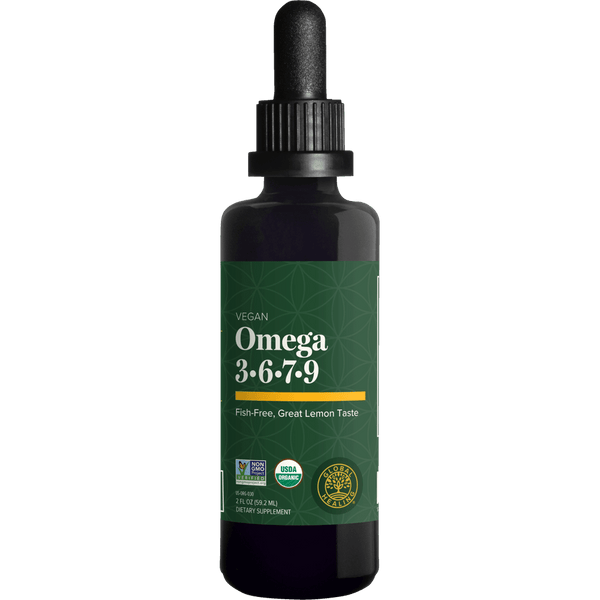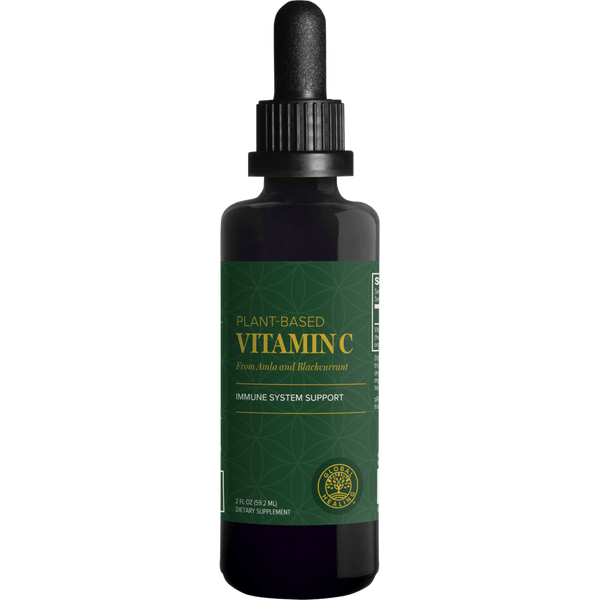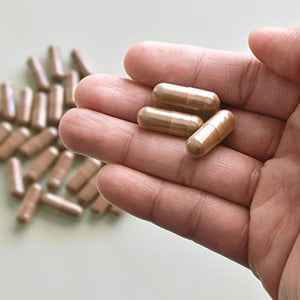What Is In the Air You Breathe? Understanding Toxins & Respiratory Health
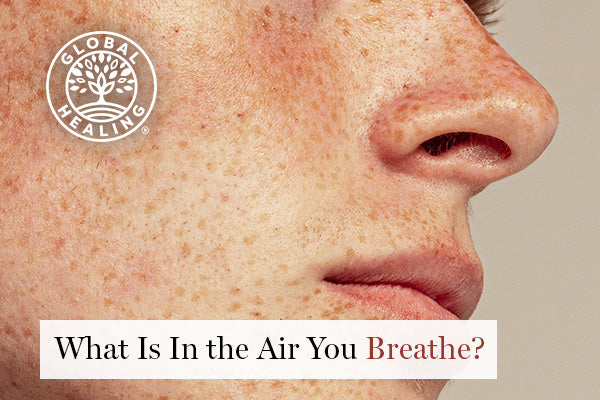
For most of us, air quality isn't something we worry about when we're indoors. When you think of "air pollution," you probably visualize thick, black smoke rising out of industrial towers or imagine the smell of car exhaust.
Outdoor air pollution happens on a massive scale and is dangerous to all living things, without a doubt. However, plants, wind, rain, the atmosphere, and our bodies naturally combat contaminants, making outdoor air generally safe to breathe. It's the relatively small spaces with little fresh airflow–like your home or office–that present more of a concern on a personal scale.
The average person spends 90% of their time indoors [1], breathing pollutants emitted from dozens of things we rely on to make life easier, more convenient, or more enjoyable. Without the outdoor environment's natural detoxifiers, your respiratory system can become overwhelmed and send ripple effects throughout your body.
This isn't to say you should get rid of everything that pollutes the air, but you should at least be aware of what you're breathing and how it affects your health. With that understanding, you can assess your surroundings and take steps to proactively protect your respiratory system from unavoidable toxins or sources you're not willing to part with.
How the Respiratory System Works
The respiratory system is the part of your body that takes in oxygen and gets rid of carbon dioxide. The breathing process can be broken down into five parts:
- You take in air through your nose or mouth.
- The air moves down your throat into the trachea (windpipe). The trachea splits into two smaller tubes called bronchi, each leading to one lung.
- The bronchi branch out into smaller tubes called bronchioles, which look like tiny tree branches. At the end of these bronchioles are clusters of tiny air sacs called alveoli. Alveoli are surrounded by small blood vessels called capillaries.
- Red blood cells use a protein called hemoglobin to pick up oxygen and bring it to your heart; the capillaries filter and return carbon dioxide to the alveoli.
- When you exhale, the carbon dioxide travels through the bronchi and trachea and exits your body through your nose or mouth.
Mucous-producing cells and millions of cilia (tiny "hairs") line your windpipe and bronchi. Mucous catches contaminants, and cilia send mucous to your throat, which you cough out or swallow. The digestive system neutralizes contaminants and eliminates them through urine and bowel movements, so this entire process effectively prevents captured particles from entering your bloodstream.
Mucous and cilia don't trap all the ultra-fine, microscopic particles floating around in the air. Polluted air often seems clean because the contaminants are so small that you wouldn't even know they're there. This kind of air pollution can enter your bloodstream, and it poses the greatest threat to your health.
What Is In the Air We Breathe?
Our atmosphere is made of up 78% nitrogen, 21% oxygen, 1% argon, 0.04% carbon dioxide, and 0.5% water vapor, but what we actually inhale depends on our environment.
Generally, when we talk about polluted air, we're talking about an unusually high concentration of nitrogen dioxide (NO2), nitric oxide (NO), sulfur dioxide (SO2), ozone (O3), carbon monoxide (CO), volatile organic compounds (VOCs), and particulate matter (PM) in the air.
VOCs are known to irritate the eyes, nose, throat, and mucosal membranes [2]. Long-term exposure could result in more serious health concerns.
PM is a mixture of several solid and liquid chemicals, including nitrates, sulfates, polycyclic aromatic hydrocarbons, endotoxins, and metals such as iron, copper, nickel, zinc, and vanadium. PM with a diameter of 10 microns (PM10) or less can enter your lungs and possibly bloodstream when inhaled, posing the biggest health risks [3].
When the Environmental Protection Agency measures outdoor air quality, it looks for six of the most common pollutants: PM10 and smaller, VOC, sulfur dioxide, nitrogen oxides, carbon monoxide, and lead [4]. All of these not only exist indoors* as well but can compound daily, depending on which sources you have in your space and how often you use them.
*Unless your house was built before 1978 and still contains lead-based paint, you likely don't have to worry about breathing in lead. So, we will dive into the five most common air pollutants, replace lead with pesticides, and add biological pollutants.
Particulate Matter (PM)
Every indoor space you enter contains particulate matter (PM), but poorly ventilated or unfiltered environments often have significantly higher levels than outdoor spaces [5]. Everyday activities like cooking release millions of ultra-fine particles, while dust trapped in carpets, furniture, and floors can contribute to 25% of indoor PM levels. Combustion sources–candles, fireplaces, heaters, and stoves–along with cleaning products also elevate PM concentrations in the air [3].
High levels of ultra-fine PM in your environment can infiltrate your bloodstream. When that happens, PM can exacerbate lung and health disease, cause irregular heartbeat and nonfatal heart attacks, aggravate asthma, and decrease lung capacity [3].
Volatile Organic Compounds (VOCs)
Regardless of location, VOCs are typically 10x more concentrated indoors than outdoors. Formaldehyde is the most prominent VOC. It's found in particleboard, plywood, paint, wallpapers, adhesives, cleaning products, cosmetics, electronics, and some paper products [6]. Other VOC sources include air fresheners, plastics, perfumes, dry-cleaned clothing, waxes, polishes, and furniture [3].
Air fresheners containing VOCs are something to pay particular attention to. Over 75% of air fresheners contain chemicals that are hazardous to human health – even some labeled as "green" or "natural" [7].
Prolonged exposure to VOCs has far-reaching effects: asthma, chronic wheezing, throat irritation, nausea, headaches, loss of coordination, and even damage to the central nervous system and major organs [3].
Sulfur Dioxide (SO2)
Sulfur dioxide comes from burning coal and oil, which are often used in heating systems, cooking appliances, kerosene heaters, and gas stoves.
Exposure to sulfur dioxide can irritate the respiratory system, leading to throat irritation, coughing, and shortness of breath. For individuals with asthma, it can trigger more severe symptoms and exacerbate the condition. Long-term exposure increases the risk of chronic respiratory diseases [3].
Nitrogen Oxides (NOx)
NItroen oxides often come from unvented gas stoves, space heaters, and other combustion appliances.
These gases can inflame the respiratory system and increase susceptibility to infections. Prolonged exposure, especially in children and those with preexisting respiratory conditions, may lead to reduced lung function over time [3].
Carbon Monoxide (CO)
Incomplete fuel combustion in gas stoves, fireplaces, and furnaces releases the colorless, odorless gas carbon monoxide.
When CO enters your bloodstream, it prevents oxygen from circulating, leading to symptoms like dizziness, headaches, confusion, fatigue, and chest pain—even at low levels. At higher concentrations, CO exposure becomes life-threatening [3].
Pesticides
Pesticides aren't only used on lawns and gardens. Many hotels, restaurants, stores, and multi-unit residential buildings regularly spray pesticides indoors. Additionally, nearly all carpeting is treated with pesticides before it's installed. In one study, researchers tested carpet dust from 51 childcare centers in Northern California. They all came back positive for several pesticides [8].
Even low-level exposure to pesticides early in life can damage the respiratory system, decrease lung function, and have effects on neurological and behavioral development [8]. Other symptoms include skin and eye irritation, dizziness, headaches, and asthma. Over time, pesticide inhalation can lead to asthma and diabetes [3].
Biological Pollutants
These are pollutants that come from living things, like pets, humans, insects, viruses, fungi, plants, and bacteria, and they enter homes through everyday activities. Poor ventilation can exacerbate the problem by allowing these pollutants to accumulate and circulate in the air.
Mold and dust mites can trigger allergic reactions, causing symptoms like sneezing, coughing, itchy eyes, and respiratory distress. Pet dander is another common allergen that can provoke asthma attacks. Bacteria and viruses spread infectious diseases. Long-term exposure to damp environments and mold has also been linked to more serious respiratory issues, including chronic bronchitis [3].
How to Protect and Rebuild Respiratory Health
It's impossible to completely avoid indoor air pollution. The majority of sources are things that make life more convenient, comfortable, enjoyable, luxurious, or easier. We would never suggest getting rid of your stove or your dog, and working in the same room as a copy machine or printer might just be unavoidable.
However, being aware of indoor air pollutants is the first step toward healthier living. If improving the air quality in your home is important to you, you can start making small changes at your own pace. And if you don't want to part with your favorite air freshener, even though it might not be the healthiest option, you can try to offset the effects with a stronger respiratory system (and maybe an air filter).
Cleanse
Use the Environmental Working Group's product index to assess the safety of things like air fresheners, cleaning products, and laundry detergents. Don't throw unused or unfinished products away–that would just contribute to outdoor pollution and waste. Finish them up or give them away.
Swap out chemical-laden cleaning products for natural ones. In most everyday applications, homemade vinegar-based solutions are just as effective. If you need to use bleach, strong disinfectant, or another heavy-duty cleaning agent, wear gloves and an N95 face mask, and make sure the area is well-ventilated.
Use supplements like ozonated activated charcoal or NAC (N-acetylcysteine) to support natural toxin removal.
Revive
Curcumin, choline, omega-3 fatty acids, carotenoids, and vitamins C, D, and E can strengthen your respiratory system and protect it against air pollutants. Research shows that eating a Mediterranean diet (plenty of fresh fruits, vegetables, and fish; minimal red meat, dairy, and processed foods) may benefit your airways as well [9].
Balance
Incorporate small practices into your daily life to actively improve air quality and respiratory health. Make sure your kitchen is well-ventilated when cooking. Use a dehumidifier in damp areas to prevent mold growth. Implement a "no shoes indoors" policy.
Most non-stick and plastic cookware emit "forever chemicals" into the air [10]. Switch out non-stick and plastic items for stainless steel, cast iron, wood, and silicone. Invest in an air purifier and vacuum with a HEPA filter, and use them often.
Exercise and perform deep breathing exercises regularly to improve oxygen flow and lung capacity. Vacuum all the soft surfaces in your home regularly–couches, chairs, mattresses, carpets, rugs, etc. If you can, consider investing in a furniture shampooer to get deeper into the fabrics.
You Have the Power to Heal
Your body is designed for wellness. With the right knowledge and consistent effort, you can reclaim your health and turn your respiratory system into a self-healing machine.
Your Body Is the Medicine is a Global Healing series that dives into eight self-healing systems, how they work, and what you can do to reignite your innate healing abilities.
In part seven of the series, we cover how your skin plays a key role in your body's overall healing journey.
Sign up for our email list to receive the next article along with valuable self-healing knowledge right in your inbox.
†Results may vary. Information and statements made are for education purposes and are not intended to replace the advice of your doctor. If you have a severe medical condition or health concern, see your physician.
References (10)
- World Health Organization: WHO. (2018, May 8). Household air pollution and health. Who.int; World Health Organization: WHO. https://www.who.int/en/news-room/fact-sheets/detail/household-air-pollution-and-health
- Manisalidis, I., Stavropoulou, E., Stavropoulos, A., & Bezirtzoglou, E. (2020). Environmental and health impacts of air pollution: A review. Frontiers in Public Health, 8(14), 1–13. NCBI. https://doi.org/10.3389/fpubh.2020.00014
- Tran, V. V., Park, D., & Lee, Y.-C. (2020). Indoor Air Pollution, Related Human Diseases, and Recent Trends in the Control and Improvement of Indoor Air Quality. International Journal of Environmental Research and Public Health, 17(8), 2927. https://doi.org/10.3390/ijerph17082927
- Status and Trends Through Economic Strength with Cleaner Air. (n.d.). https://gispub.epa.gov/air/trendsreport/2022/documentation/AirTrends_Flyer.pdf
- US EPA, O. (2014, August 15). Indoor Particulate Matter. US EPA. https://www.epa.gov/indoor-air-quality-iaq/indoor-particulate-matter
- Kaden, D. A., Mandin, C., Nielsen, G. D., & Wolkoff, P. (2010). Formaldehyde. In www.ncbi.nlm.nih.gov. World Health Organization. https://www.ncbi.nlm.nih.gov/books/NBK138711/
- Ajasa, A. (2023, February 22). If you can smell your air freshener, you might have a problem. Washington Post. https://www.washingtonpost.com/weather/2023/02/22/air-freshener-indoor-air-quality/
- Hazard, K., Alkon, A., Gunier, R. B., Castorina, R., Camann, D., Shraddha Quarderer, & Bradman, A. (2023). Predictors of pesticide levels in carpet dust collected from child care centers in Northern California, USA. Journal of Exposure Science & Environmental Epidemiology/Journal of Exposure Science and Environmental Epidemiology. https://doi.org/10.1038/s41370-022-00516-8
- Whyand, T., Hurst, J. R., Beckles, M., & Caplin, M. E. (2018). Pollution and respiratory disease: can diet or supplements help? A review. Respiratory Research, 19(1). https://doi.org/10.1186/s12931-018-0785-0
- What's Cooking? (2020, December 8). Www.ecocenter.org. https://www.ecocenter.org/our-work/healthy-stuff-lab/reports/whats-cooking
Posted in: Cleansing, Health > Whole Body Wellness > Respiratory,

Dr. Edward Group, DC
FOUNDER | HEALER | ADVOCATEDr. Group, DC is a healer and alternative health advocate, and an industry leader and innovator in the field of natural health who is dedicated to helping others. He is a registered doctor of chiropractic (DC), a naturopathic practitioner (NP), and proud alum of Harvard Business School and MIT Sloan School of Management. Dr. Group, DC is the founder of Global Healing – a mission and vision he has shared through best-selling books and frequent media appearances. He aims to spread his message of positivity, hope, and wellness throughout the world.
